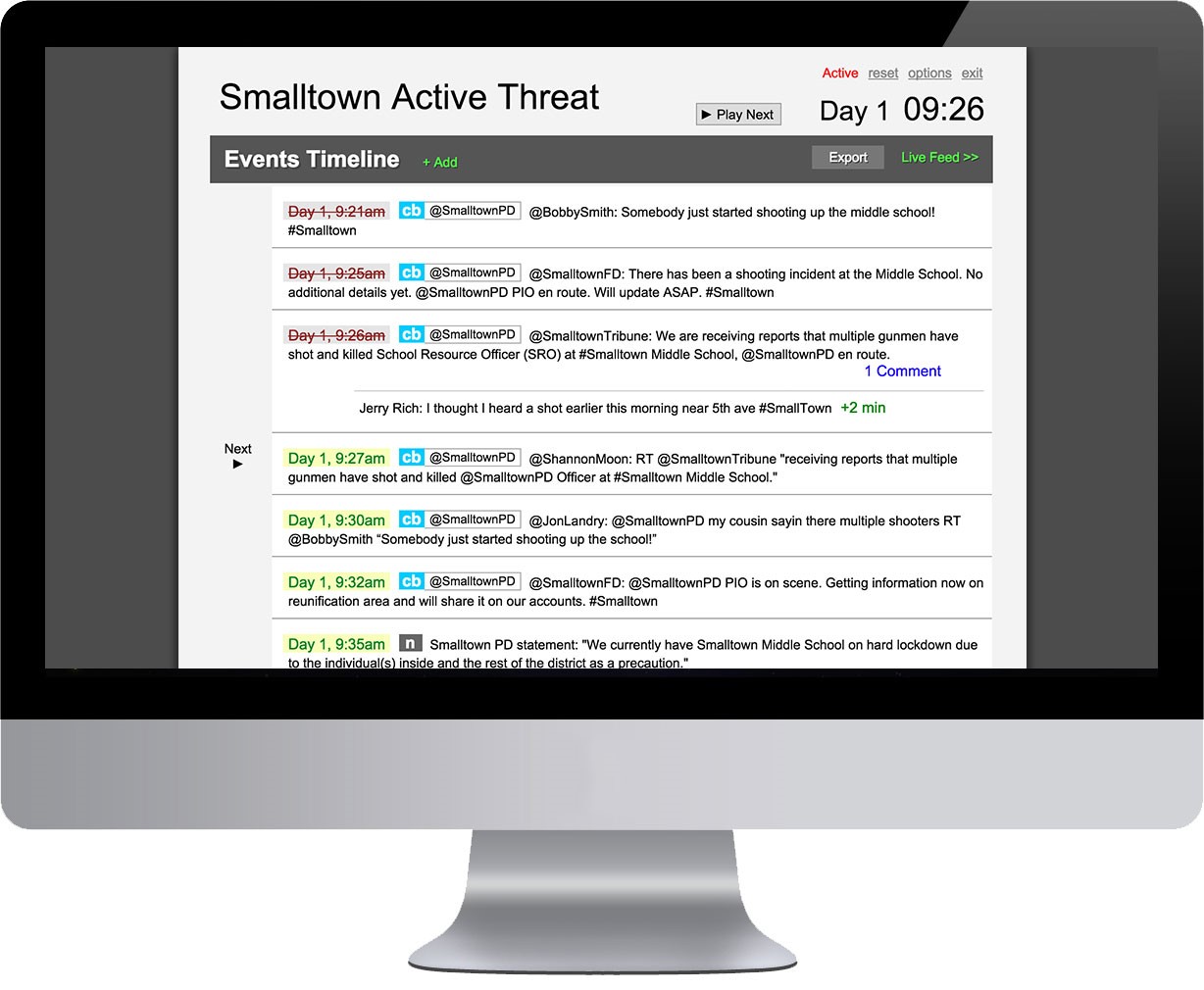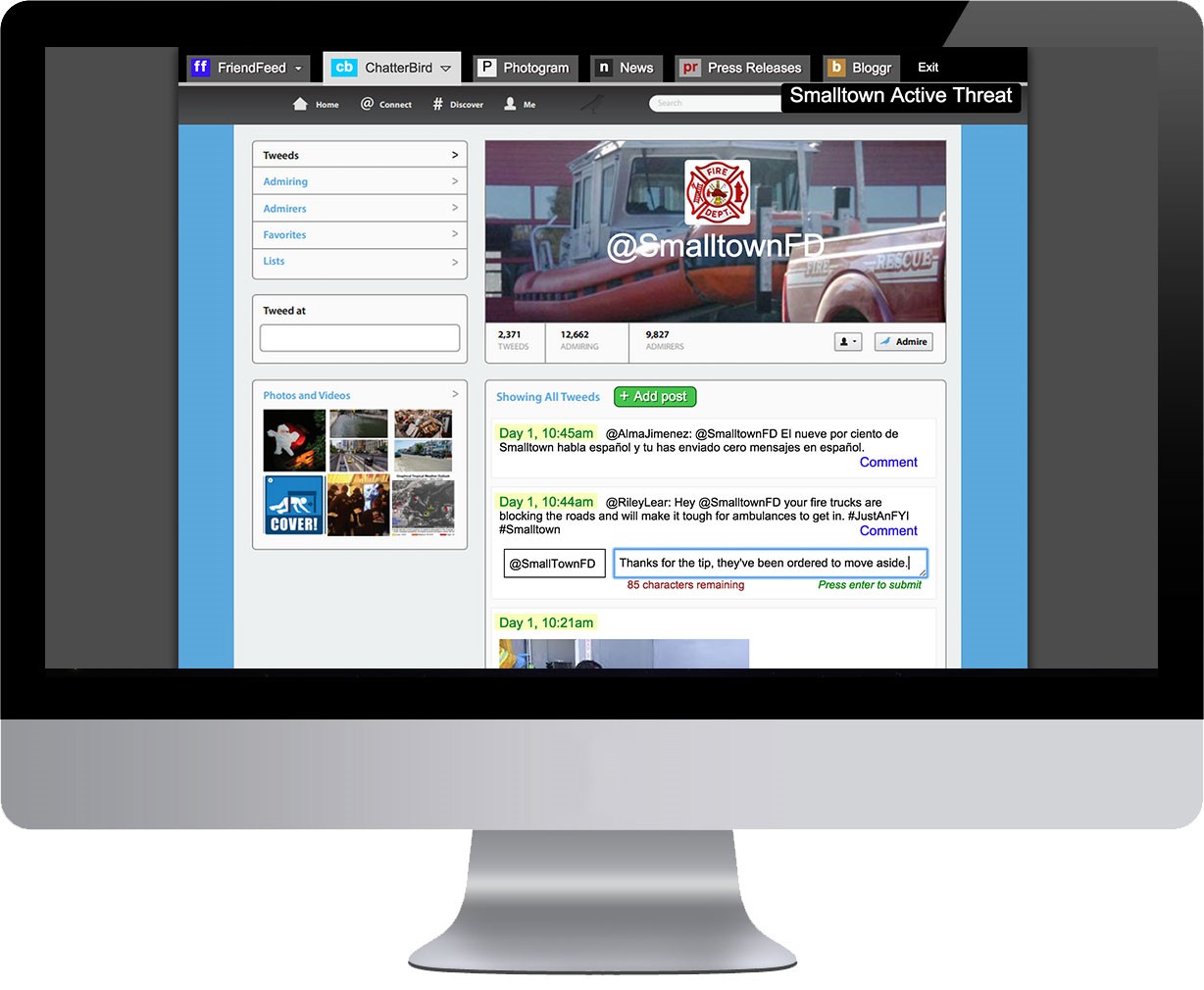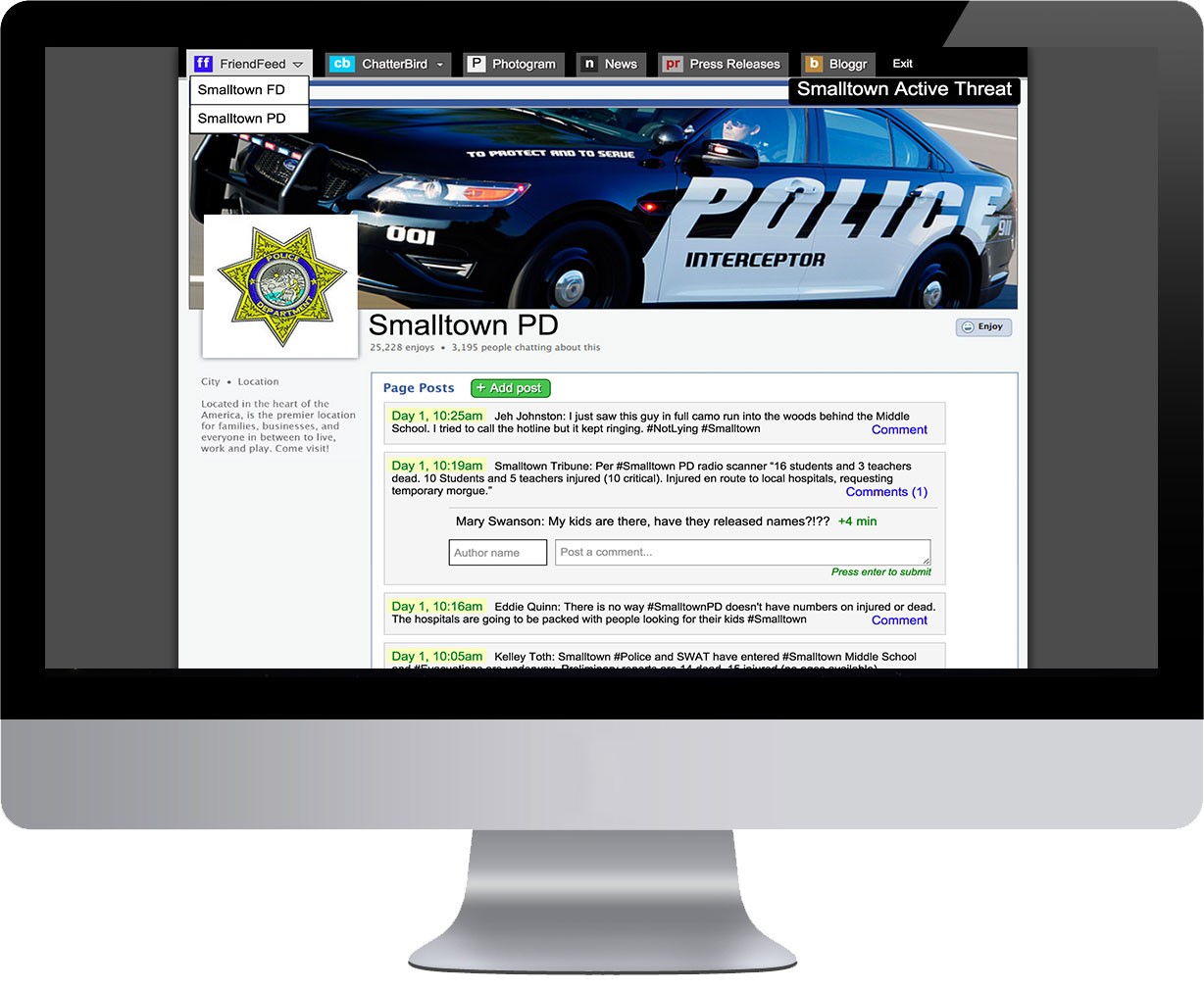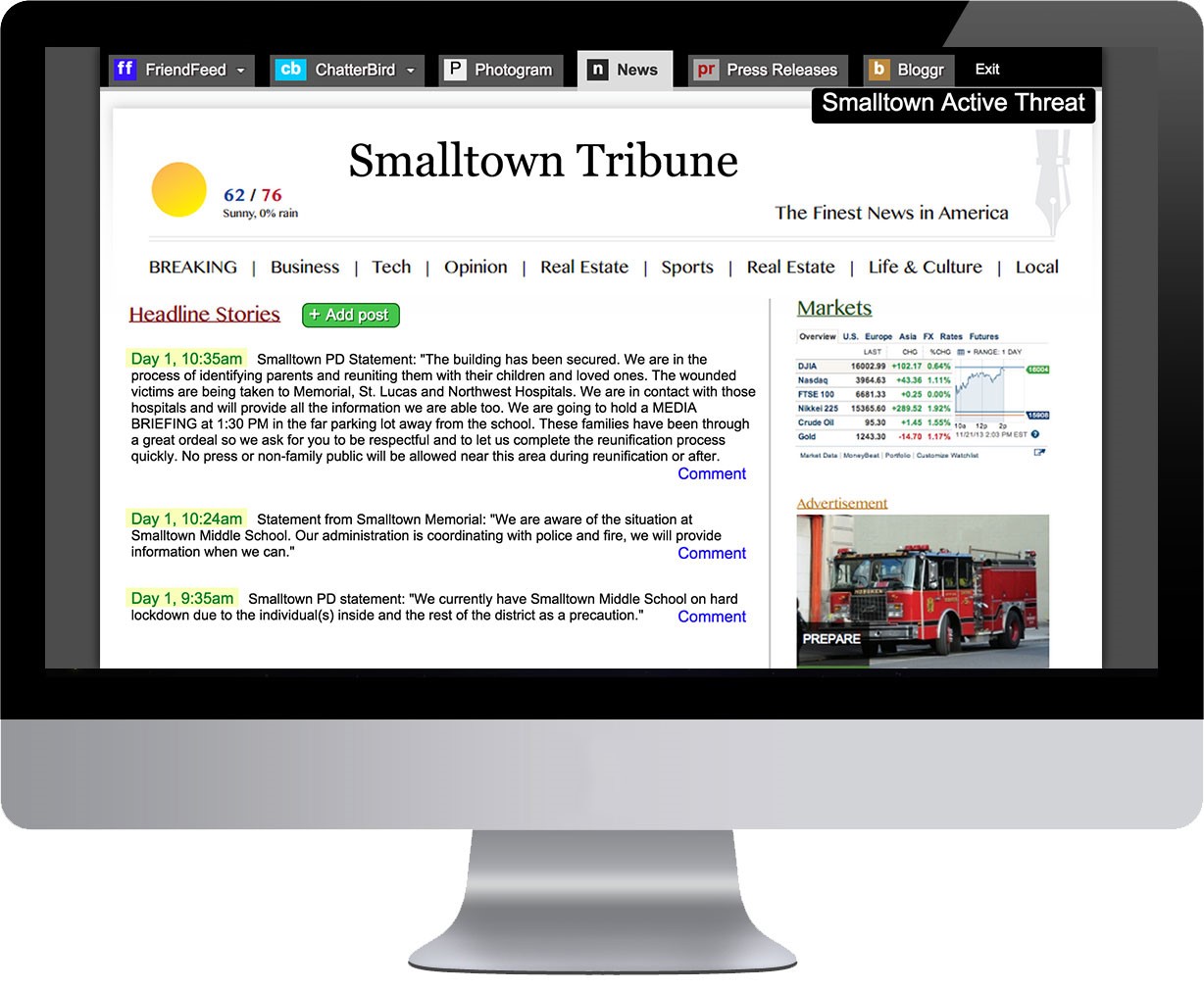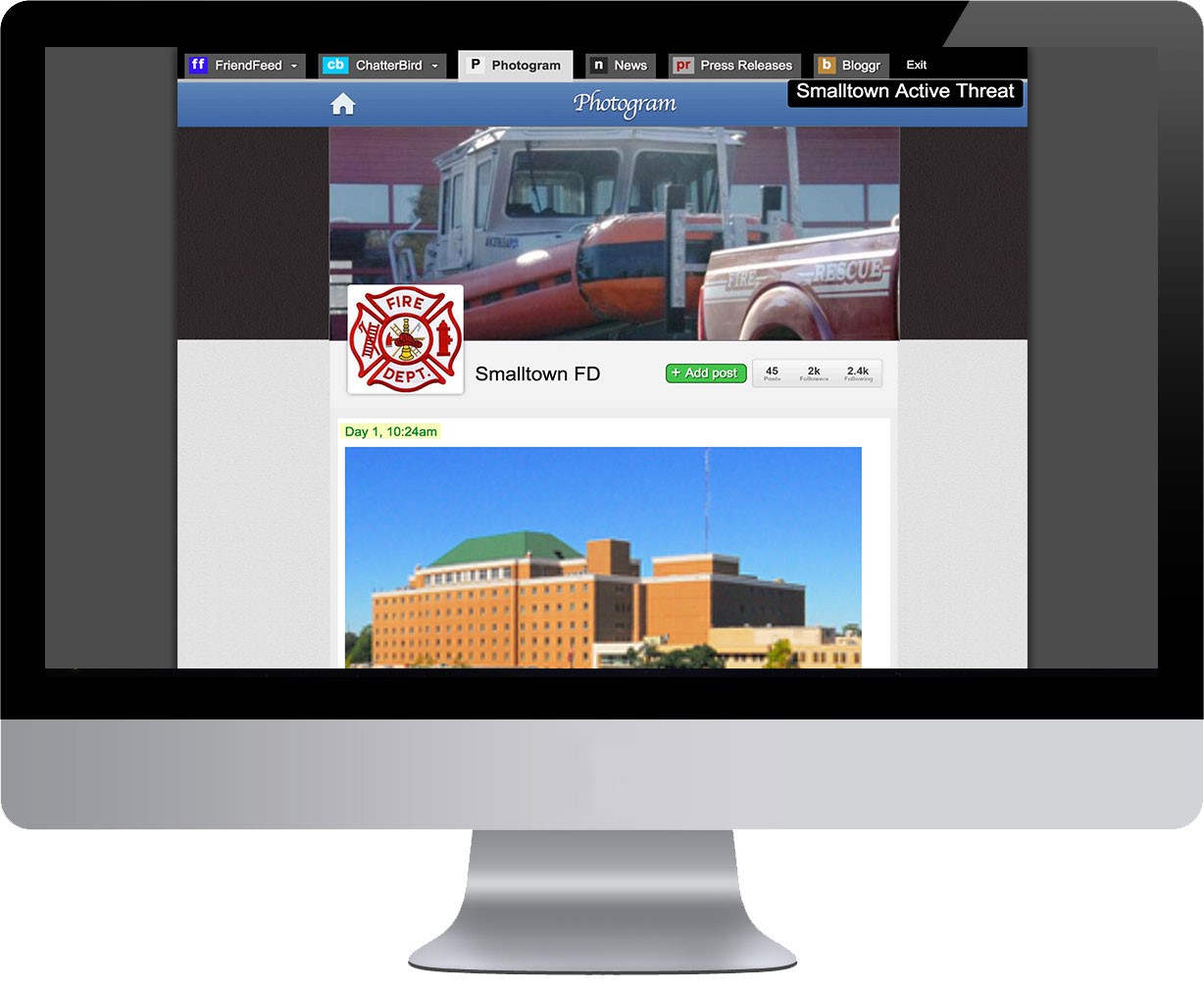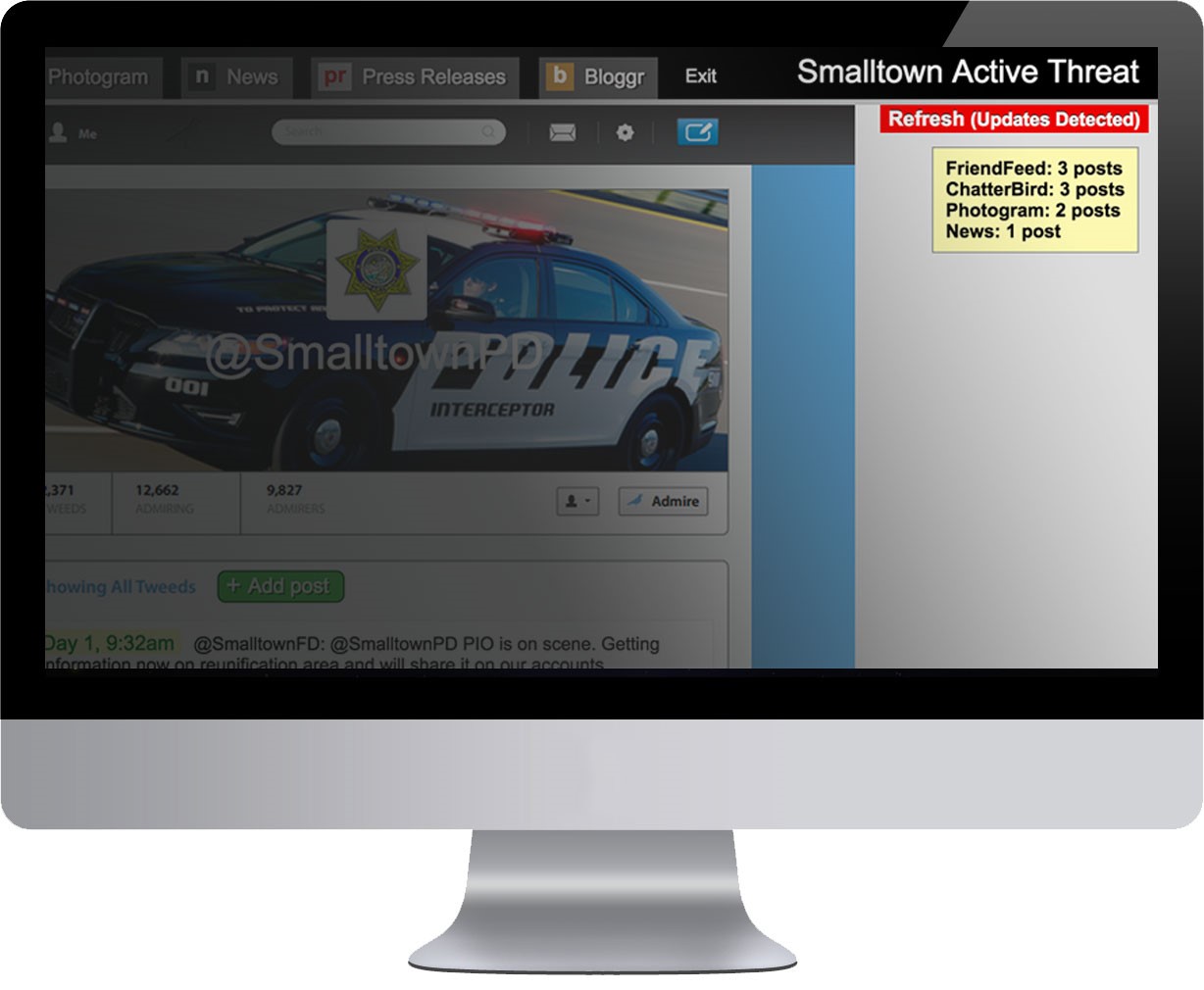Exercising Social Media - Review of and Q&A with EMSocialSimulation
/I was recently able to talk with both Corey Mulryan and Kyle McPhee from Hagerty Consulting, a well-known and fast growing emergency management consulting firm. Corey and Kyle have been leading an effort at Hagerty to develop a new social media exercise tool called EMSocialSimulation. This blog post contains a review of the tool as well as Hagerty's Q&A responses that provide additional information.
EMSocialSimulation is a great social media simulation tool geared toward organizations and jurisdictions looking to train and exercise on beginner to intermediate social media capabilities at an affordable price. I was impressed by how well the whittled down the feature set to not overwhelm users as well as exercise planners. This is perhaps a significant advantage over incumbents such SocialSimulator, Conductrr, Polpeo and SimulationDeck that offer more advanced features and controls, but can easily become overwhelming to a novice social media organization.
If you want to test different types of social media accounts such as all the Twitter accounts in your jurisdiction, EMSocialSimulation makes it easy to create multiple accounts on each simulated social media platform. It has accounts for FriendFeed (Facebook), ChatterBird (Twitter), Photogram (Instagram), News (Simulated Media Posts), and Press Releases.
Many of you in the public sector may be asking if the tool is aligned with HSEEP as you may be required to follow this methodology. Because EMSocialSimulation is just a simulation platform (not a methodology), this is the wrong question to be asking. EMSocialSimulation merely helps you execute HSEEP designed and developed exercises or other types of exercises related to social media. As such, it is aligned with HSEEP, but is certainly not an HSEEP methodology tool. You would plan an exercise just like you would normally and then use EMSocialSimulation to simulate the social media capabilities under the Public Information / Public Affairs emergency support function.
Hagerty has mostly been using EMSocialSimulation to support their existing clients and as a result is not as self-service oriented I would have liked to see it, especially as it has been in use for over twelve months. For example, you still have to go through a sales process with them and have them bulk upload injects, unless you want to do each one by hand. They also have inject templates available and are creating more for different hazards and scenarios; but again, you must still go through your Simulation Coordinator in order for these templates to be accessed and uploaded.
The video below walks you through EMSocialSimulation as well as Hagerty's social media exercise design and development process.
I am excited to see, though, that they allow the export of all simulation data for analysis. Most of the data can be analyzed by someone with some basic Excel data and analytic skills. However, Hagerty will also provide this type of analysis as a service. One data point they capture that might be useful is the response time between when a message was posted vs. responded to. This can help you identify if response times are within your guidelines or help you determine if there was a problem with the social media response timing as a whole.
Overall, I would recommend this tool to organizations and jurisdictions just beginning their foray into social media messaging and response. I would not say this is your Cadillac platform for social media simulation and it won't scale to thousands of tweets easily. But it should suffice and be all that is needed for many in the emergency management community. Just don't be scared off by the design of the tool looking like it was built in 2005. It still has the power you need it to have.
In the comments below, I would interested in knowing your social media training and exercise challenges? What has been your experience with other tools?
I also asked Corey to answer some additional background questions you might finding interesting:
What is your name and role in the Organization?
My name is Corey Mulryan and I am the Simulation Coordinator and simulation content developer for EMSocialSimulation (EMSS). I work with clients to develop the simulation, and if needed, help run the application on the day of the exercise.
What does your tool do?
EMSS helps users practice the use of social media in a realistic, safe, and secure environment. EMSS helps identify gaps in plans and operational structures where internal policies and procedures. Finally, EMSS is scalable, which results in cost effectiveness and customization.
What/who inspired you to create this?
Social media is here to stay and its role in emergency management has become a matter of expectation, not the exception. As an example, a client of ours asked if there was a way that we could incorporate social media into their exercise. We questioned our typical response and that sparked the innovation. We researched current solutions and found that they were not meeting the need. Some examples observed included low tech options like sending a fax or email with simulated social media messages or creating private accounts on live systems, but that is not realistic and is risky, not to mention a lot of work for our clients. Other high tech solutions seemed overdone, expensive, and outside of clients reach.
The Hagerty team started discussing social media and that its inclusion should be the standard, the same way we don’t think twice about following or including Homeland Security Exercise Evaluation Program (HSEEP) in every exercise. We wanted to provide our clients with an opportunity to practice social media, familiarize themselves with process and approach, and see how social media could be incorporated into what they do during normal operations and response.
What challenge does your tool help customers overcome?
Emergency Managers and first responders know they should be using social media. The University of San Francisco’s 2013 study on using social media identified that “80% of Americans expect emergency response agencies to monitor and respond on social media platforms, additionally, 33% expect help to show up within just 60 minutes of a post.”
Those numbers are a wake-up call. A public expectation has been established and EMSS helps meet this challenge by training staff and demonstrating to management the benefits of using social media in disaster response. During Hurricane Sandy, “the American Red Cross had 23 staffers monitor over 2.5M Sandy-related social media posts.” Agencies cannot hope that one person will be able to handle social media alone, EMSS allows them to cross train multiple staff members to build knowledge and trust within an agency. EMSS allows players to remain engaged during a longer exercise with a steady flow of information that we try to keep interesting.
How does it do this?
EMSS hosts replicas of common social media platforms that can be customized based on the objectives of the engagement. Players are able to make posts and comment in a way that looks and feels real. Of course, all of this is controlled in a secure environment by the Simulation Controller. EMSS does not link to any social media platforms so there is zero chance that any messages sent or posted during a simulation will end up on an agency’s actual accounts. The Simulation Controller will develop injects to test various responses from the players. This can be issuing information, responding to requests, monitoring traffic, or anything else. The Simulation Controller will then upload injects in accordance with the exercise timeline and be able to respond to players in real time. After the simulation is complete, the Simulation Controller can export the data to an After-Action Report/Improvement Plan.
What is next for the tool?
This tool can really help people, we have seen it firsthand. We want to continue to help users experience social media in their training and exercise endeavors, and to bring the whole concept to life. We want this to foster the development of internal procedures and integration of social media into communications standards. We want to continue this process and work to better identify how social media is used to monitor situations, communicate with residents and stakeholders, share information, and reach the whole community. EMSS has been used geographically across the country, with events ranging from a tabletop to a full-scale exercise. This tool is available for an affordable price and can include multiple stakeholders or formats, such as training, exercise, or simulation.
How can people get in touch, learn more or test the tool?
If anyone is interested in EMSS they can go to our website for more information www.emsocialsimulation.com. On the website they can fill out the contact us form at the bottom or send an email directly to emsocialsim@hagertyconsulting.com. We will quickly respond and schedule a demo and discuss the application.
